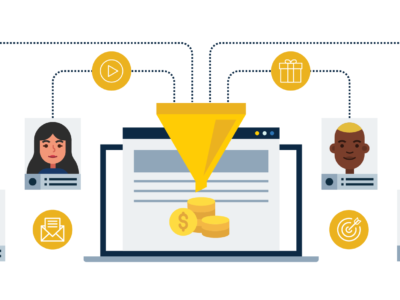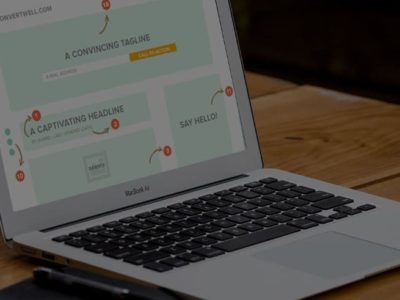While blogging can work wonders both for B2B and B2C companies, we want to look at how business blogging is particularly effective for the B2B industry.
First of all, B2B companies need to establish thought leadership, whatever industry they may be in. Save from some already established brands, blogging is one of the most effective ways for small players and newcomers to build their online presence and authority.
Here are some quick statistics on B2B marketing trends:
- Marketers who prioritize blogging are 13x more likely to have a positive ROI on their efforts. (OptinMonster)
- 81% of businesses reported their blog as being critical to B2B lead generation. (Blue Corona)
- 71% of B2B buyers consume blog content during their buyer journey. (Demand Gen)
Given that the majority of B2B marketers are putting their best foot forward this year, how does a B2B company set up its business blog for success?
1. Set the right goals and build your content strategy around them
Blog goal setting is one of the crucial first steps that are often overlooked. Many would jump to content creation without a clearly defined set of goals and strategies. Don’t let your efforts go to waste by wild guessing on what to post or how to layout your blog. Make your goals evident in your blog’s content.
Here are some of the usual big picture goals in coming up with a blog strategy for B2B:
Thought Leadership
B2B companies offering unique products or highly technical services would want to become an authority in topics relevant to their niche or expertise. Being a thought leader means you’re able to provide answers to questions in your target audience’s minds. By answering their questions, especially the ones with higher levels of difficulty, you can build authority in that particular industry, therefore making your target market trust you enough to do business with you.
Brand Awareness
When I think of “brand awareness” in relation to B2B blogging, the following brands immediately come to mind: Hubspot, Buffer, Copyblogger. They publish blogs that are an amazing resource for highly technical topics when their main product is software. They have become household names when it comes to marketing best practices, and that’s the kind of brand awareness you want to achieve.
Customer Service or Community Building
An effective way to keep your existing customers happy and engaged is to create content that will help them use your product or understand your service better. You have to know their pain points, listen to their questions, and be able to address these concerns. When you can create this kind of resource for your customers, you’re also building a community around your product or service. Both of which are reasonable goals to aim for when starting a B2B blog.
Also Read: Convert Blog Readers into Leads
2. Set Key Performance Indicators
‘Goals’ and ‘KPIs’ (Key Performance Indicators) are sometimes used interchangeably to refer to the results you want to achieve. However, we want to put a distinction between these two important concepts.
GOALS are the desired big picture outcome.
KPIs are metrics that indicate the level of performance, and therefore measures if you’re achieving your goals.
We like using the SMART goals method when breaking down goals.
- Specific
- Measurable
- Achievable
- Realistic
- Time-bound.
Here’s a sample of a specific, measurable, achievable, realistic, and time-bound KPI:
Increase traffic by 20% (5,000 visits per month
to 6,000 vpm) by Dec 31, 2020.
Listing down goals in this manner gives you a clearer and data-driven direction for your strategy. Setting up these benchmarks will tell you if your efforts can bear fruits.
3. Get very specific about your buyer personas
Identifying buyer personas is crucial to make sure that you’re publishing quality and relevant content.
Blogging for B2B organizations can be highly technical and therefore, should be targeted to a very specific market. People are looking for answers and solutions, and these days, it’s not enough to just have “blog categories” or general themes. You have to know who you want to attract so you can create content that’s custom-fit for them.
When creating buyer personas, consider demographics, behavior patterns, motivations, and goals. Think about the key phrases they would search in Google. Think about what their questions might be, what their job is, what their responsibilities are, how you can help them do their job better.
Identifying your buyer personas is an on-going process. Sometimes you get to know your target market more as you go along.
4. Know your keywords
Keyword research is a lot of work, which is probably the reason many of us skip this step. However, identifying opportunity keywords (long tail keywords that your buyer personas would likely search) will help you optimize your content better.
In doing keyword research, you have to get into the mind of your buyer persona and think about possible search queries and questions they might have. Begin by asking your customer support team or existing clientele, and take note of recurring topics.
Once you have identified these key ideas, run an analysis of their corresponding related keywords using Google Keyword Planner.
Another way of doing this is by browsing related FAQs on Uber Suggest, Quora, and Reddit.
5. Analyze your competition and get to know influencers in your niche
91% of B2B marketers consider content marketing a core strategy. This means, whatever your niche is, chances are, there are influencers and thought leaders that already exist out there. You want to know who these people are, see what they’re up to, and find out what works for them. By doing so, you can set benchmarks for your strategy and identify how to position yourself in that niche.
The easiest way to find niche blogs is through Google itself. Type on the google search box: “keyword” inurl: blog. For example: “customer service” inurl:blog”
This will return pages with the keyword you’re looking for and have the word “blog” in their URL. It will filter out non-blog pages in the list of results, therefore only giving you the most popular blogs within that niche.
Diving deep into competitor analysis can give you a lot of ideas on how to approach your blog. List down three to five of the best blogs and assess these blogs based on content, presentation, and performance.
- What are the topics they discuss?
- What works for them? What doesn’t?
- What are their best performing posts?
- What are they missing and what can you do to fill in the gap?
- What sets your blog apart?
6. Establish a multi-authored blog and begin creating content
Based on your goals, KPIs, keywords, reader personas, and competitive analysis start listing down blog topics that you want to publish on your blog.
A multi-authored blog is recommendable, particularly in a B2B scenario where you want to associate your in-house Subject Matter Experts to your brand. This is like saying, “Hello. We’re good at this. Here are the experts you’ll be working with.”
7. Remember that B2B blogging is all about generating leads
But of course, the most crucial thing in B2B blogging is to usher readers to your marketing funnel. Learn about lead generation to provide a smooth transfer to the marketing funnel.
The bottom line is to generate leads and convert these leads to paying clients. So, always be on the lookout to optimize for and increase page conversions as a whole.
To know advanced B2B lead generation tactics through careful evaluation of your SEO strategy, here’s a complete guide you can download for free:






